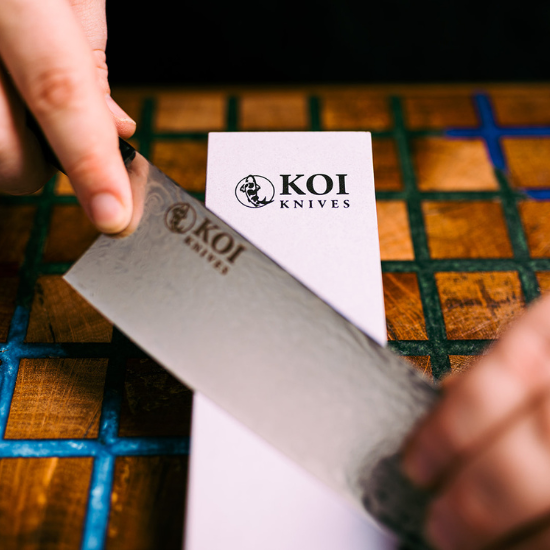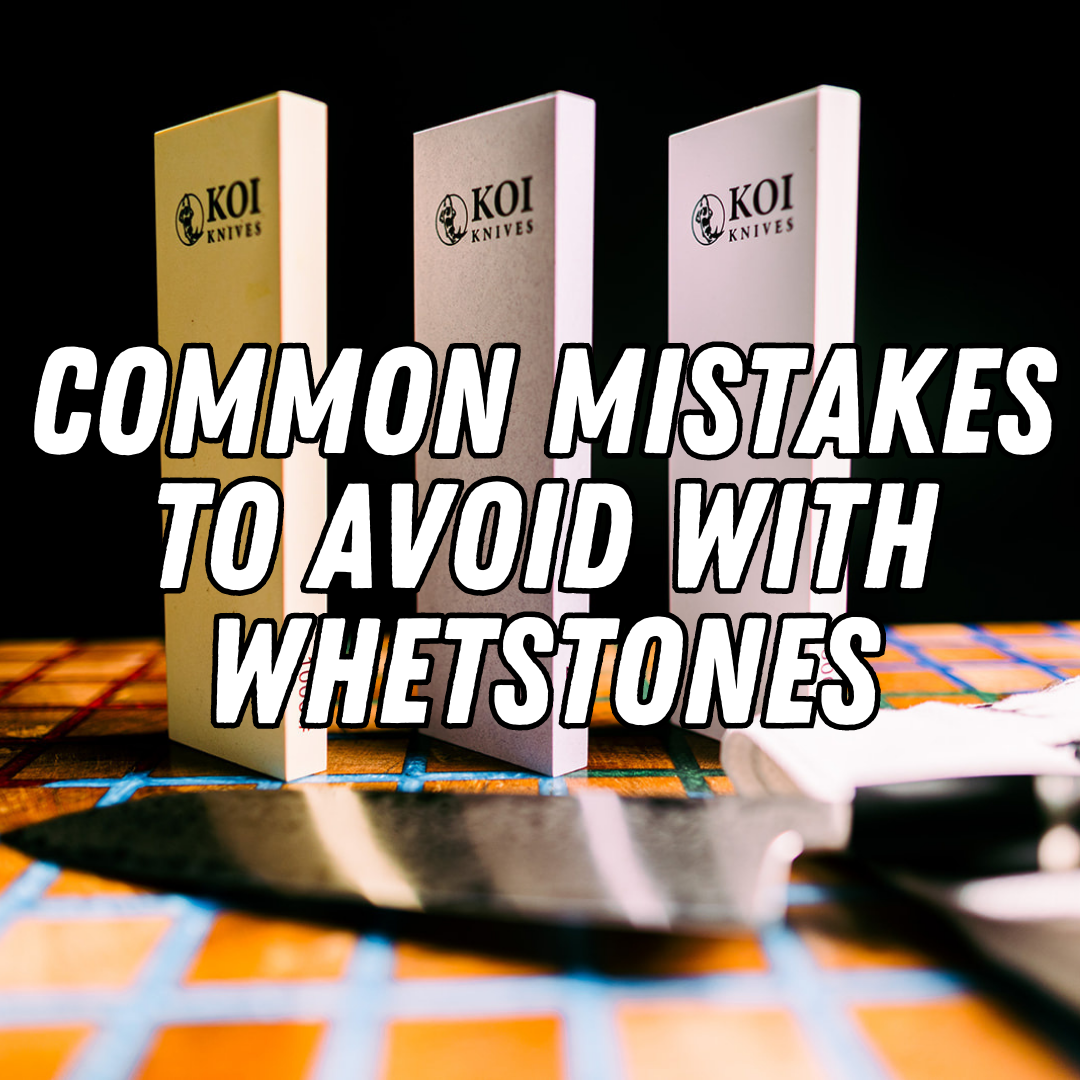A very good question. Here's a short answer.
What not to do?
Don't put it in the dishwasher or leave it in a sink full of water as this can lead to corrosion. We also recommend against cutting on a glass chopping board as this is terrible for the blade (can lead to chipping).
What to do?
Our knives have a high carbon concentration meaning they are harder at the edge. This means less honing is needed (i.e. sharpening with your rod at home or in the kitchen).
With this type of steel you should have it sharpened by a sharpener (ideally on a whetstone to stop the steel heating). How often varies depending on usage however most people do it every 3-6 months.
To summarize, less honing and more stoning.
If you need help finding a sharpener near you give us a bell and we will do our best to assist.
Here' a little more detail from Shannon...
KNIFE MAINTENANCE
HANDLE
You have your new knife home and have cooked up your first feast for your family or friends. How do I clean it?
Easy, simply wipe the blade clean with your dishcloth in warm soapy water and dry with your tea towel.
The wood and wood fused with resin handles are quite delicate and don't like being left in really hot water. If left for too long this can start to remove the polish which is the wood and resins shield and gives a layer of protection. Don’t be alarmed if the handle gets wet and put into the sink at times as it will be fine but the more you can limit this the longer it will last without needing any work done to it. If over time, years it starts to lose the shiny look and looks a little dull you can give it a little polish yourself with furniture polish to reinvigorate it.
However if the intention is to ruin your beautiful Koi knife then put it through the dishwasher to clean after use and in no time it will be wrecked. If you decide to go down this path please do not show me the knife as I will most probably burst into tears.
BLADE
As I have mentioned for cleaning simply wipe down with warm soapy water. Try to limit the knife rubbing and scraping up against other steel cutlery in the sink or drying rack as this can sketch the AUS-10 damascus steel. The best thing to do is dry straight after you clean it and place it on a knife rack away from humidity. Job done.
The steel on Japanese style knives generally has a slightly higher carbon content than Western style knives, pairing this with the heat treating process gives Japanese style knives slightly harder steel than Western style knives. The measurement of the hardness of steel is called the Rockwell test with the higher the number the harder the steel. Japanese knives can range from 58-62 HRC whilst Western 54-58HRC.
What does this mean?
Knives made using high carbon Japanese steel will hold a sharp edge for much longer than western knives but when they are dull (this might take 6 months or a few years pending on use) they will have to be sharpened properly on a whetstone or machined on a grinding wheel. Striking on a honing rod will heap hold the edge longer but once its dull a proper sharpen will be required. Another offshoot of the hardness, the steel will crack, chip or fracture easier if treated poorly as it is on the cusp of being brittle.
Western knives being softer, your knife does dull quicker but you can sharpen easier with a few quick strikes on a honing rod every week or so meaning you will not have to whetstone or machine sharpen quite as often. The other offshoot of western style and softer steel is if you treat your knife poorly you will more so dent and bend out of shape. Both have their advantages and disadvantages and everyone has their own preference.
If you are sensible your knife will be your companion for life, just treat it with a little love.



